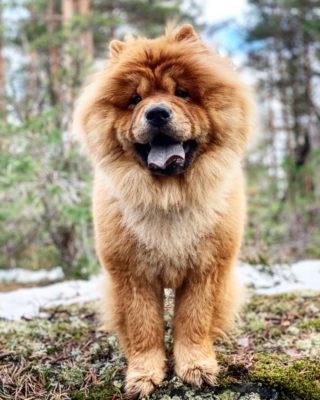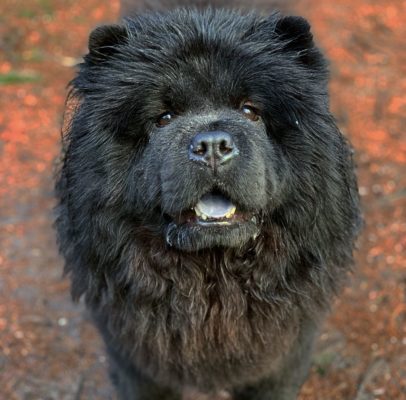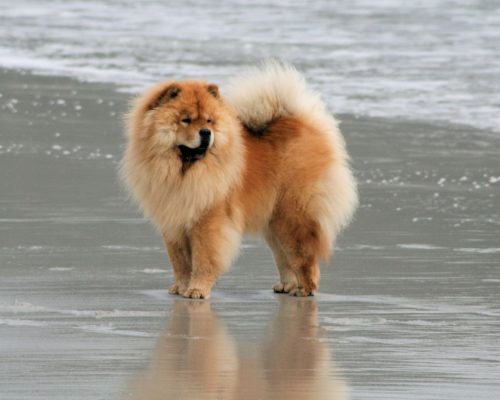Chow Chow
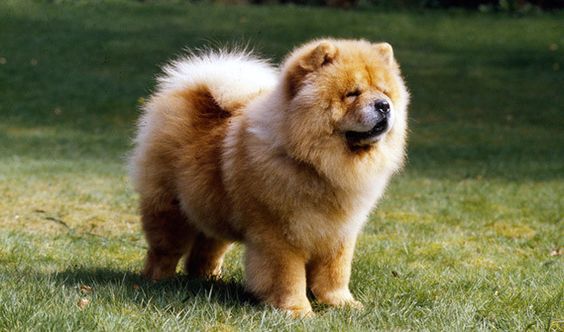
Chow Chow has a very kind disposition and compliant character. It is a dog that will undoubtedly become your favorite. The sight alone is worth it! This plush fluffy dog with a slightly sad look is sure to win the heart of every member of the family. Chow is devoted to his owner and very attached to his attention. What can not be said about strangers – the dog will be careful with them.
Table of Contents
Breed Information
| Another Name | Chow |
| Origin | China |
| Height | Males 48-56 cm Females 46-51 cm |
| Weight | 20-32 kg |
| Fur | Long |
| Color | Black, red, blue, mustard, cream or white |
| Lifespan | 9-15 years |
| FCI Classification | Spitz and primitive types |
| Group | Guard dogs |
| Price | From $600 |
Breed Photos
Origin History
Chow Chow is one of the oldest dog breeds. Its appearance cannot be confused with any other dog. It is rightfully considered unique, incredibly beautiful, and noble. If we refer to the direct translation of its name from Chinese: “the dog is a furry lion”, it is impossible to say more precisely about it.
The formation of the breed took a very long time. A Chinese bas-relief from 150 B.C. shows a hunting dog that looks a lot like a Chow Chow. Studies and DNA tests prove that it is one of the first primitive breeds to evolve from the wolf in northern China’s arid steppes.
The Chow Chow genealogy book was actively kept in Buddhist monasteries, where the breed was bred. There the dogs were used for guarding, hunting, and for a while, even as sled dogs. Earlier, the breed was rightly considered a “workhorse”, but now it is more of a decorative dog.
There are many versions regarding the name of the breed. Earlier it was believed that Chow Chow was related to Tibetan Mastiffs. Depending on breeding, the names varied as well – Chow Chow was a wolf-dog, a black-tongued dog, and a bear dog. However, only two versions are confirmed:
- Chow Chow gets its name from the ancient dog chu;
- The name of the breed was invented by English merchants who traded in spices. They called all Chinese living in England “chow” and “chink”.
In Europe, the Chow’s first mention appeared thanks to the Italian traveler Marco Polo, who was living in Tibet at the time. Closer to 1785, a more detailed description of the breed appeared. In his book “Natural History and Antiquities of Selborne,” the scientist Gilbert White told about the features of “bear” dogs, which he called Chow Chow. The dogs did not reach England until the 1830s, and in 1865 the Chow was presented to Queen Victoria herself. The Chow Club in Great Britain was established in 1895.
Appearance
When you meet a chow in the street, it’s impossible to walk by and not fall in love with this breed. Proud gait, chic coat, clever look – it’s all an integral part of this breed. The most unusual and distinctive feature of chow-chow is its dark blue tongue, which is also characteristic of Shar-Pei. This “bear cub” is very harmoniously built. The head is large and massive. Wide skull. There is no evident transition from forehead to muzzle. Small ears, rounded at the ends, are set wide and tilted slightly forward. It is what gives the chow-chow a certain sullenness. The physique is compact; the dog looks proportional. Wide and powerful loin. The coat stands upright, thick, straight, very soft undercoat. The coat’s length is divided into two types: long-haired – a rich, fluffy coat; short-haired – a rare variety, which is called “smooths.” The quality of their hair does not differ. Color is allowed the only monochrome.
Character
Chow Chow has a very kind disposition and compliant character. It is a dog that will undoubtedly become your favorite. The sight alone is worth it! This plush fluffy dog with a slightly sad look is sure to win the heart of every member of the family. Chow is devoted to his owner and very attached to his attention. What can not be said about strangers – the dog will be careful with them. It is better not to impose their attention on Chow, he does not like it. The dog will be open and friendly only to those whom he fully trusts. Animals are treated indifferently, without aggression.
It is worth noting that the Chow belongs to those dogs that do not need a too active lifestyle. The pet is quite happy with a measured and quiet apartment life next to the beloved owner. It will also feel comfortable in its own home on a large property. There he will be able to fully show his usefulness, develop the skills of a watchdog and protector of the whole house.
Care
If you become the owner of a chow, prepare for the fact that there will be a lot of hair in your house. But do not rush to get upset and buy a powerful vacuum cleaner; it will be enough to buy a special brush and a feather duster. Comb the pet regularly, and examine the hair for lint. During the molting season, comb him daily, unless you want an extra carpet of Chow Chow hair. Bathe no more than two times every few months. Follow standard recommendations for ear, eye, and claw care as well.
Training
Chow Chow is quite difficult to accept all attempts at training. Early socialization and the beginning of training are recommended. According to research conducted by scientists at the University of British Columbia, the Chow has the lowest perception of learning and the lowest command execution rate (77th out of 80 breeds). So it will take a fair amount of time and patience if you want to be successful.
Common Diseases
Unfortunately, Chow Chow owners quite often go to the veterinarian for help. They are prone to various diseases, including hereditary diseases:
- adrenal insufficiency;
- entropion (eyelid curl/eye eversion);
- anomaly of claws (splitting);
- myopathy;
- dysplasia of the hip and elbow joints.
Nutrition
The diet should be chosen based on the dog’s needs. Chow is picky about the composition of the food. Experienced owners prefer dry food with low protein and fat content, where everything is already balanced and ready to eat. Diet and allergy-prone dog foods are also suitable. Don’t overfeed your Chow or give him treats from your table, so you don’t damage his health and digestive system.
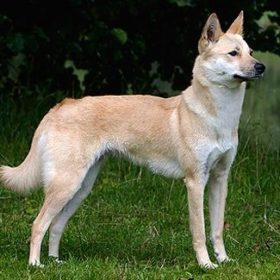 Korean Jindo
Korean Jindo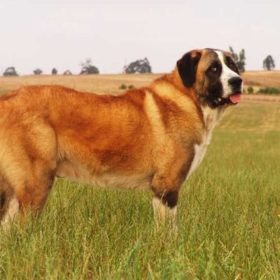 Rafeiro do Alentejo
Rafeiro do Alentejo Ariégeois
Ariégeois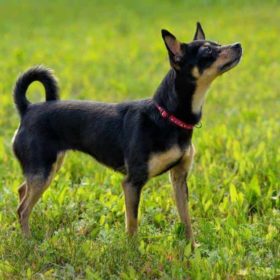 Russkiy Toy
Russkiy Toy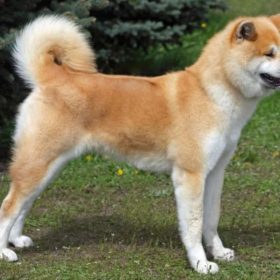 Akita
Akita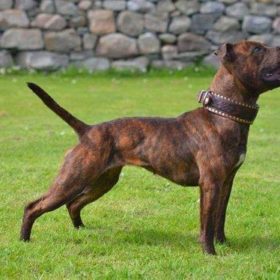 Staffordshire Bull Terrier
Staffordshire Bull Terrier